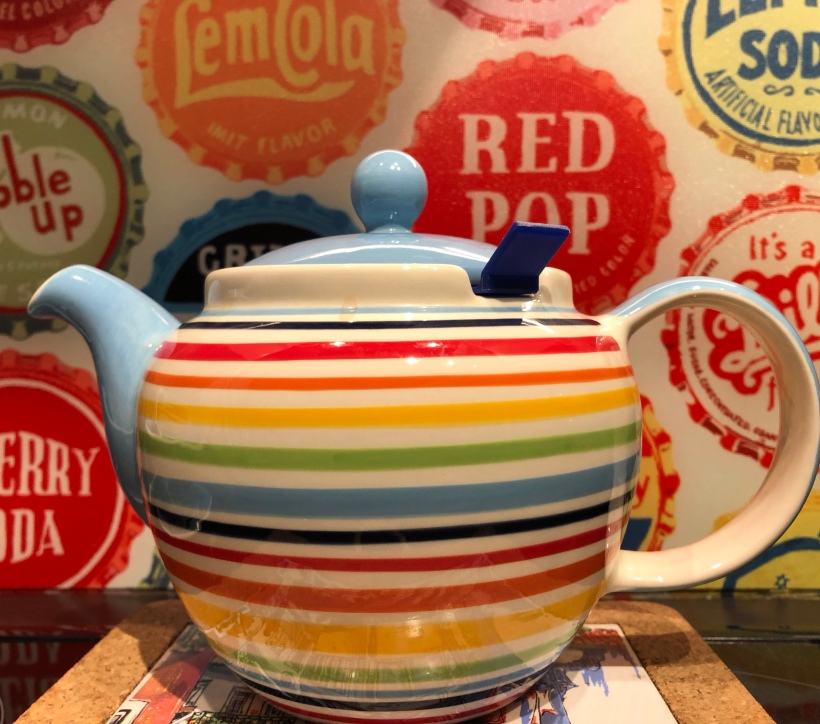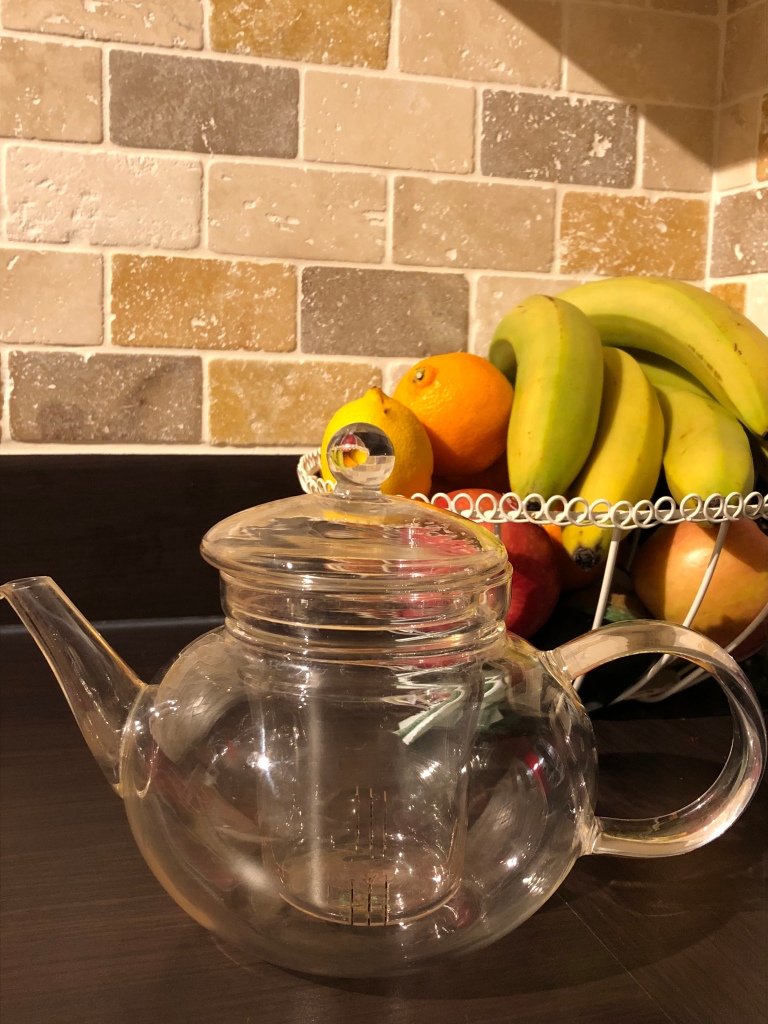Of course, we can’t talk about tea without talking about teapots. Used widely across the world to brew tea, it’s surprising to see that the teapot shape doesn’t change much across countries. It’s mostly round and always has a spout, a lid and a handle – perhaps the handle has the most variations in design. Now, I know some people like to brew teas directly in mugs by stirring the teabag around for 15 seconds and calling it a job done. But I’m wiling to bet that at least half of those people have a teapot hiding at home somewhere that is either used as a decoration on a shelf or taken out when friends come over and there is a bigger need for tea.
How many types of teapots are there?
If we first go by material, the main ones in use nowadays are ceramic, porcelain, glass, clay and cast iron. In Victorian times, it was very common to have a silver teapot in the upper classes (most likely the only people who could also afford the tea at the time). If you want to read more about the role of it in this time, I would suggest this post.
Anyway, others might have stainless steel or copper teapots but it’s not that common in my opinion.
You can also categorise teapots by size. Chinese clay teapots are generally smaller because the tradition calls for leaves to be steeped multiple times so you wouldn’t need large pots. They can even be as small as one cup’s worth, which would be under 100 ml. Western teapots will come in volume sizes or, quite commonly in England, cup sizes. Not like bras though! Typical sizes are: 2 cup, 4 cup and 6 cup.
Which material should you choose?
The choice of teapot material will probably come from personal style preference but if you’re looking for some objective reasons, here are some advantages and disadvantages of each.
Ceramic
This is probably the most popular type in the western world in my opinion. The good thing about them is that they are fairly inexpensive, have low heat transfer (which means they keep the tea warmer for longer), they are easy to clean, and they come in a variety of sizes, patterns and colours so you’re bound to find one you like. The disadvantage would be that they are prone to breaking or chipping, as most things. Here’s a picture of mine.

Porcelain
Often associated with a posh or extravagant way of having tea, porcelain or fine bone china (similar but not the same) has a similar property of heat retention to ceramic despite the fact that it’s significantly thinner. It will generally come in flowery or more traditional patterns and designs, but I think this material is making a comeback so more and more styles are available all the time. The unfortunate thing is that it’s even more brittle and more expensive than ceramic so just be careful with it!

Glass
When you want to impress someone or you simply get pleasure from watching the leaves dance around in the water, a glass teapot is the way to go. I would especially recommend it for flowering teas. Glass has the obvious advantage of transparency but it’s also a lot more delicate. Glass teapots are made of a special type of reinforced glass so you don’t need to worry about pouring boiling water in it, it won’t crack. However, it does break a lot easier than other materials and it loses heat a lot faster too so you need to be quick with your tea drinking. That’s why I prefer to have a small one – a 2 cup size.

Cast iron
Traditionally Japanese, no one can deny that cast iron teapots are beautiful and they are steeped (excuse the pun) in tradition. They are also very durable. They certainly won’t suffer the same fate as glass teapot if you drop them on the floor. In fact, I’d be more worried about the floor than the teapot. And this is coming from someone with a reputation for clumsiness!
Cast iron teapots have high heat retention once they warm up but this could sometimes play against them. I would say you need to be especially careful to use the correct water temperature for more sensitive teas like green and white to avoid scorching them. If you’re not sure what that is, just look on the packaging of any tea and it should tell you. I also mention it in all my tea reviews. A disadvantage of these teapots is that they can be quite heavy and quite expensive; but cast iron normally is, even when you buy a pan.

Clay
These teapots are commonly used in China and have been used for centuries. Some of them can be beautifully decorated and traditional Yixing clay can come with a high price tag. Clay teapots are on the small side as leaves are infused for short periods of time (30 seconds) and for multiple times. However, the biggest downside and at the same time unique quality comes from the fact that the clay is porous so it will be absorb some of the tea flavour. Use it with only one type of tea and it’s said its flavour will become better in time. I’ve heard that it’s a popular choice for Oolongs and Puerh teas, but I’ve never actually used one.

What about you? What teapots, if any, do you have at home?
Until next time,
Anca
This is a wonderful overview of teapot materials! I use a ceramic 6-cup teapot as my everyday teapot. It has a removable infuser, so I generally use loose teas rather than tea bags. I start every morning with a pot of strong black tea. I like “Scottish morn” from Harney & Sons. As the day progresses, I vary the types of tea a bit, always tending towards herbal teas later in the day. My preference is for ceramic or porcelain teapots. I own a silverplate teapot but have never used it!
LikeLike
That’s great! I’ve never had a Scottish Morn but if ever see one, I’ll be sure to try it.
LikeLike